Much of Red Hook first learned of a plan to locate a large, for-profit nursing home facility behind Van Brunt Street, adjacent to Pioneerworks, at the monthly Red Hook Civic Association meeting on June 24.
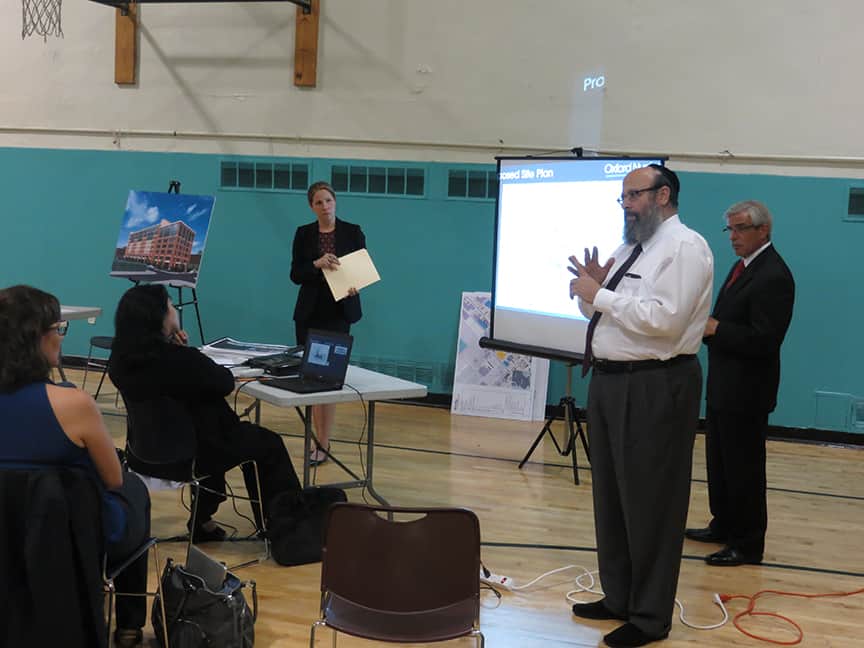
The property, which was purchased by the nursing home operator back in 2003, has been rented out on a month-to-month basis to an ironworker and bus operators while the Oxford Nursing Home, currently located in Fort Greene, laid the groundwork for their move to Red Hook.
The presentation, using power point slides, was made before a local crowd, many of whom expressed shock and surprise by the location of a medical facility in a flood plain, as well as by the enormity of the proposed complex consisting three connecting buildings rising 7, 8 and 9 stories, in an area of four and five story buildings.
Nora Martins, a youngish, earnest and practiced attorney, began the presentation. She is with the law firm Davidoff, Hutcher and Citron. Sid Davidoff, founder of the firm, spent seven years as Mayor John Lindsay’s administrative assistant. He started his law firm in 1975, and it has grown into one of the top lobbying firms in NY State. Government relations is one of the firm’s specialties.
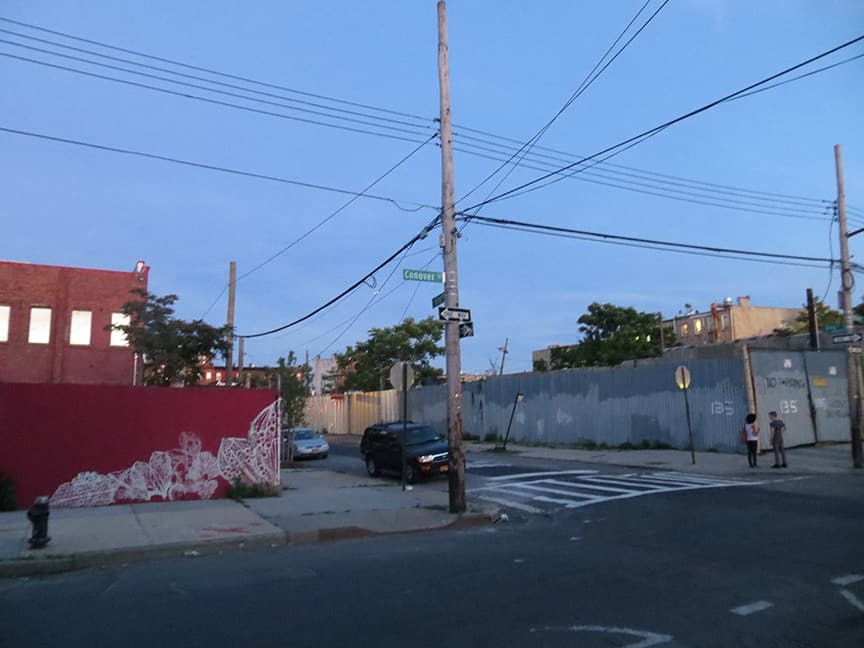
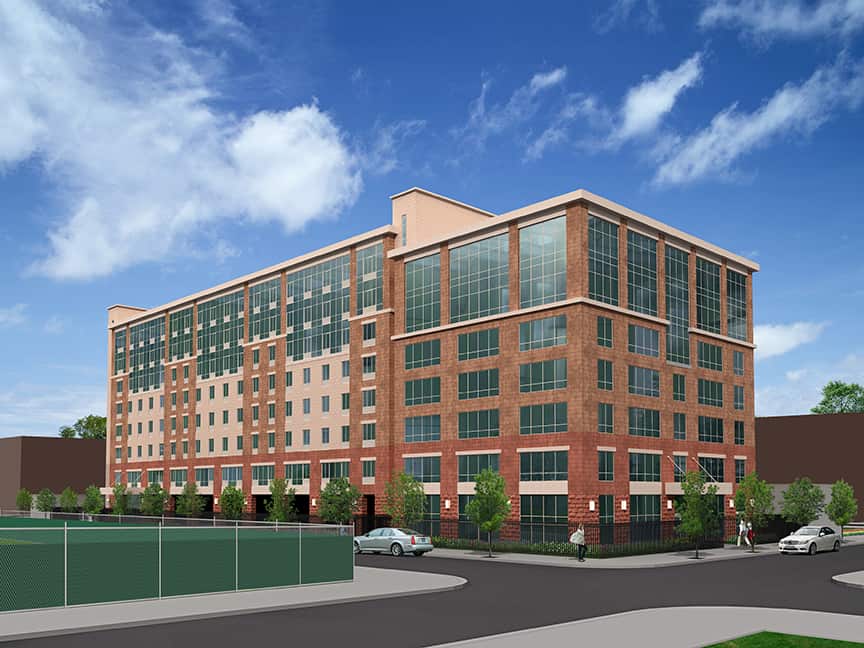
The next presenter was the project’s architect, David Mammina. Mammina, from Carle Place, LI, ran his own firm for 27 years before being acquired in 2013 by H2M Architects and Engineers, a much larger company headquartered in Melville, Long Island, with offices in Albany and New Jersey. Mammina’s resume includes projects for Staples, the Lefrak Organization as well as many healthcare facilities.
Mammina’s company has done multiple projects for the Ridgewood-Bushwick Senior Citizen Center, a nonprofit founded by former Kings County Democratic Leader and Assemblyman Vito Lopez. Lopez preceded Sheldon Silver and Dean Skelos in being ousted from office due to questionable practices. A 2010 NY Daily News article questioned Mammina’s connections with Lopez and the Senior Center. The Center is a much needed and loved community service but has been tainted by corruption investigations involving Lopez, his staff, women, and money.
Nursing home a family business
Barry Braunstein’s family has been in the nursing home business for multiple generations, operating facilities in the Bronx, Brooklyn and New Jersey. He owns the Laconia Nursing Home in the Bronx, the Oxford Nursing Home in Brooklyn, and is listed as a Director of the Bedford Center for Nursing and Rehabilitation, also in Brooklyn. Both the Laconia and the Oxford were once owned by Bernard Bergman, the central figure in the nursing home scandals of the 1970’s.
Braunstein bought land in Red Hook in 2003 with plans to relocate his Oxford Nursing home here. As he explained, the current Oxford building, at 144 South Oxford Street, close to the Barclay Center, is obsolete, built as an Elks Club a hundred years ago, and unsuitable for today’s medical needs. He explained that the Board of Health has only allowed him to remain operating because they knew he had plans for this new building.
Zoning issues have delayed these plans, starting with the 2005 designation of much of Red Hook an IBZ zone. IBZ was developed by the Bloomberg administration as a zoning tool to protect industrial use. In 2012 the IBZ zones were given a second look by city agencies and they asked for local input. In Red Hook, a group of property owners, including Dustin Yellin of Pioneerworks and Braunstein, petitioned to be removed from IBZ so that their own projects could blossom. This was done in the fall of 2013, and returned a central swath of Red Hook to its previous zoning.
This allowed Oxford to move forward. Their land is currently zoned M2-1, medium industrial use. They are requesting Uniformed Land Use Procedure (ULURP) to change the zoning to M-5/R7 which would allow them to build their proposed nine story nursing home, using a greater floor to air multiplier because it would qualify as a community facility.
They are at the beginning stage of ULURP, with their proposal “certified” by the Department of City Planning. What this means is that the application is complete, and ready for public review.
ULURP a multi-step process
The next step is Community Board review. The application then goes to the Borough President, then City Planning, and finally, a full vote of the City Council. In many cases, the position of the local council member determines the success or failure of the application. The Mayor has the option of vetoing a ULURP decision, although that can be overriden with a 2/3 vote of the Council.
On Thursday, June 27th, the Landmarks/Land Use committee met at the Miccio Center and heard the same presentation made the night before at the Civic Association. This presentation has evidently been making the rounds, as we have heard that a presentation has also been made to Councilman Menchaca, who did not attend either meeting.
Committee Chair Bob Levine explained that the presentation is informational only, and that there would be no voting on the plan that night. That would happen in September or October, he explained.
At the Civic Association, much of audience concern was about traffic, parking, building in a flood plain, and the great bulk and height of the building.
CB 6 brought out a more nuanced crowd, and while traffic and height were major concerns, the issue of appropriateness and aesthetics was brought up as well.
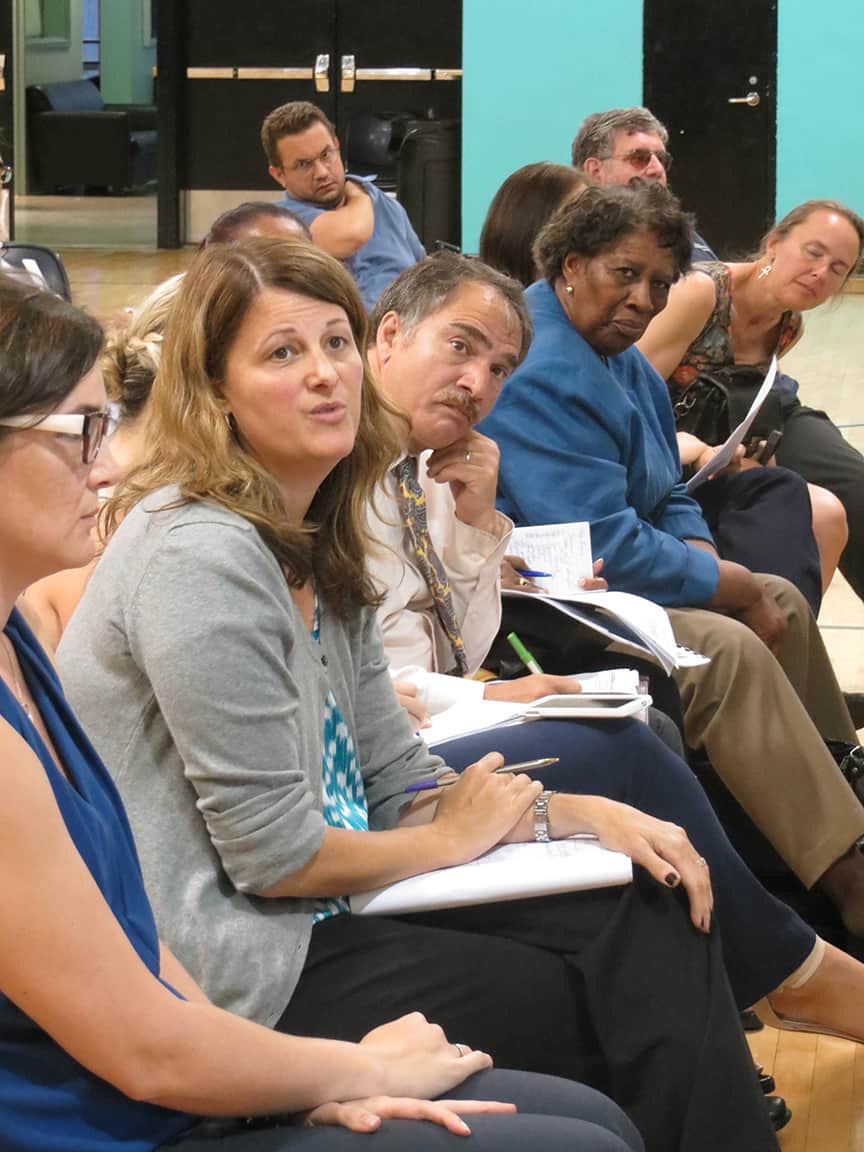
Melissa Stewart, an attorney who lives on the corner of Van Brunt and King Streets, made some salient observations. She made the obvious point that the proposed height doesn’t fit in at all with the neighborhood. She pointed out that existing traffic is already a major problem on Van Brunt and the side streets. And she commended Pioneerworks, which would end up being neighbor to the nursing home. “Pioneerworks is a absolute gem, she said, continuing “they have a beautiful outdoor garden whose sunlight will be blocked.” It was pointed out that Pioneerworks has brought many art and concert goers to the neighborhood, which is perfectly appropriate to the mixed industrial/residential community with a large percentage of artists.
Marshall Sohne, who is a local real estate developer, questioned whether the ULURP was actually an illegal case of “spot zoning.” According to a NY State document on zoning, ” Spot zoning refers to the rezoning of a parcel of land to a use category different from the surrounding area, usually to benefit a single owner or a single development interest.”
His objection was brushed over by the Oxford’s legal representative, but in fact, much of the presentation attempted to present the nursing home as a beneficial addition to the community. Promises include local employment, local purchasing from Oxford as well as an “expanded customer base to support local retail and restaurants.” One of their slides even mentions the 1990 era 197A plan for Red Hook. They claim that the home fits in with the goals of “opportunities for improved housing, social and youth services and expansion of the residential population.”
While it is true that the land has mostly been home to parked buses and trucks for more than a decade, during all that time it has been owned by Braunstein, who has rented out his land on a month to month basis for those uses while planning to build the nursing home.
It was also stressed a number of times in the presentation that the ULURP application includes two existing building adjacent to the proposed nursing home. It was said that these buildings would be brought into zoning conformity once the zoning change is made. Unsaid was that it also brings a second party into the zoning application which would address any charges of illegality.
CB6 member and Red Hook resident Jerry Armer commented that despite the architects claim that he was thinking of Red Hook when designing the building, it looked to him like it belonged in Queens. Afterwards Armer confided that he was being kind, and really should have said New Jersey.
Councilmember Menchaca, who is the most important player in local zoning issues, gave us this statement:
“The developers proposing a nursing facility at 141 Conover Street in Red Hook met with me and my staff in June. They presented detailed architectural renderings and described their intentions for the property. The developers have submitted an application for a change to the zoning of the site to the Department of City Planning.
I expressed to them my concerns about maintaining manufacturing uses, locating vulnerable nursing home residents within a flood zone, the scale and context of the project, resilience, and impact on the community.
When we met, I directed the developers to engage directly with the Red Hook community and report back to me with results.
Since then, they’ve made presentations with Community Board 6, and the Civic Association. They may seek to meet with other local groups. I strongly encourage them to do so.
I will continue to foster and monitor community engagement on this topic.
While I recognize the value of nursing homes and I encourage investment in Red Hook, the placement, scale and complexity of the proposed project demands a careful examination of community impact.
Residents and Business owners in Red Hook deserve responsible, sustainable growth in line with my long-standing commitment to preserving manufacturing zones, developing local employment and preserving essential aspects of Red Hook’s neighborhood character.”
Red Hook will have the summer to decide whether a nine story nursing home in the middle of what might otherwise become a cultural center is something that it wants.
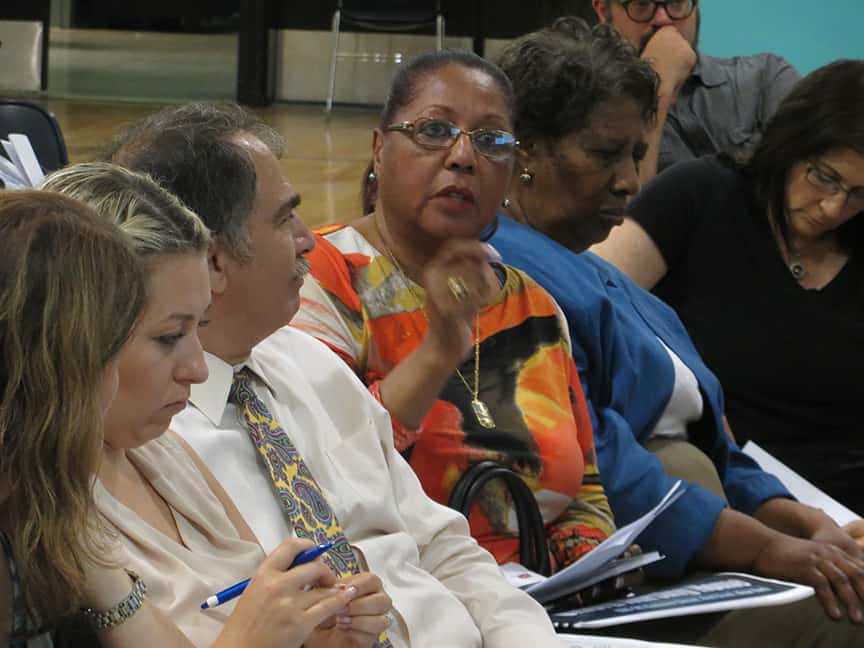









One Comment
Pingback: In 2000, The Nursing Home Business Was Big Business… Little has Changed | LOSTMESSIAH